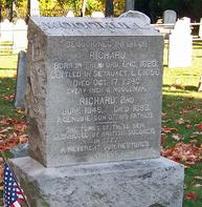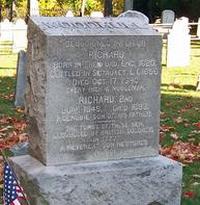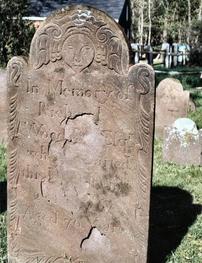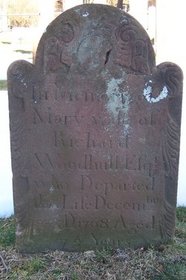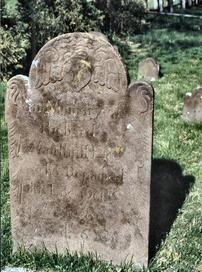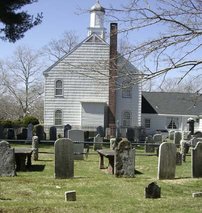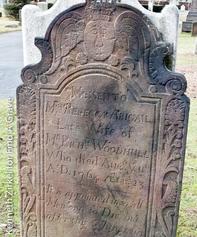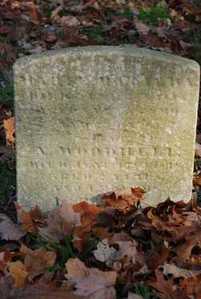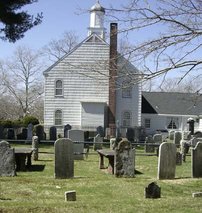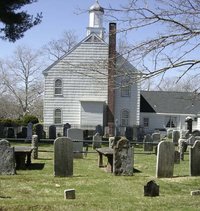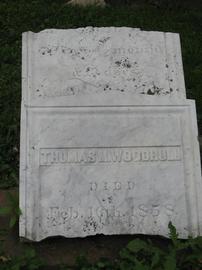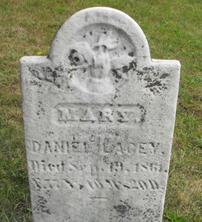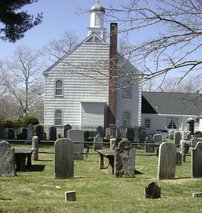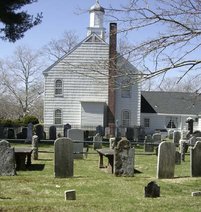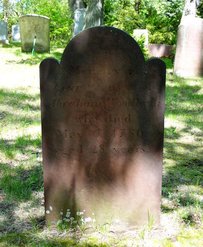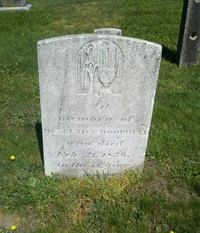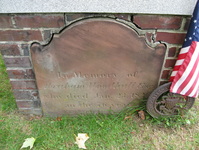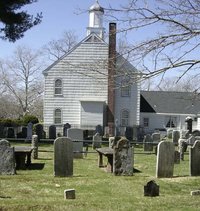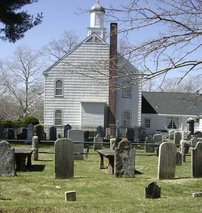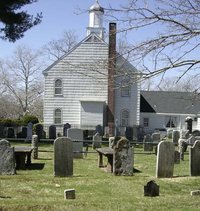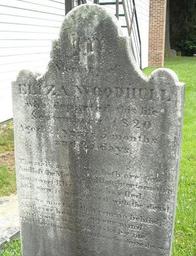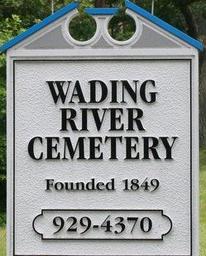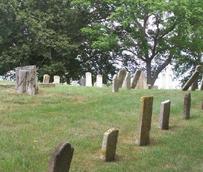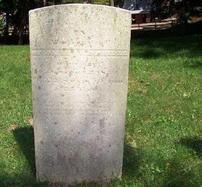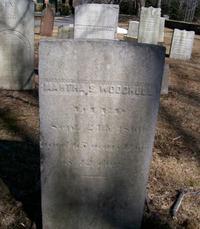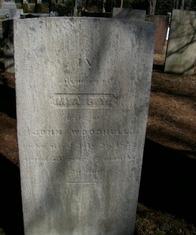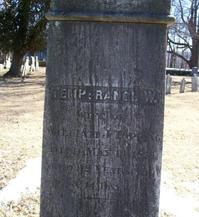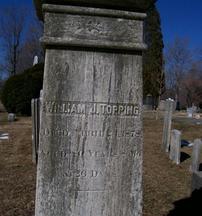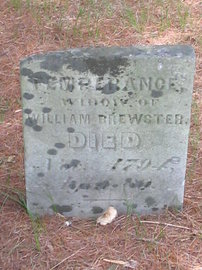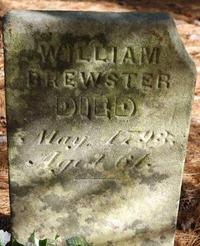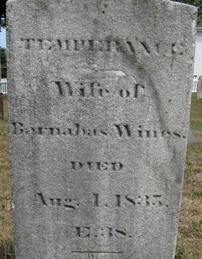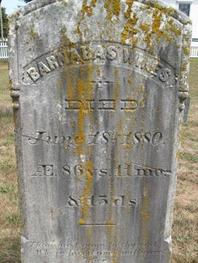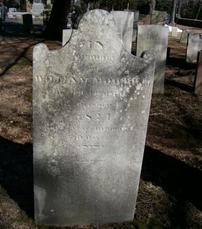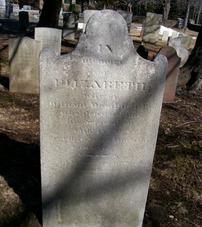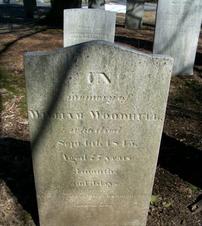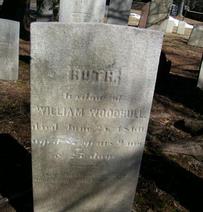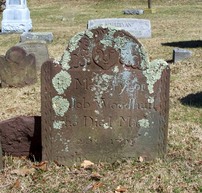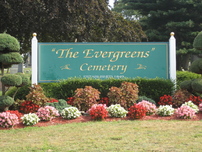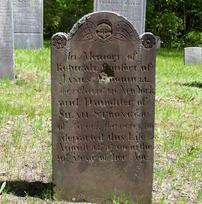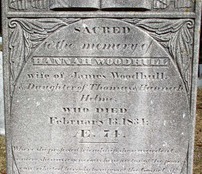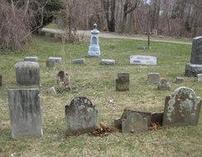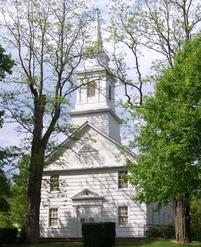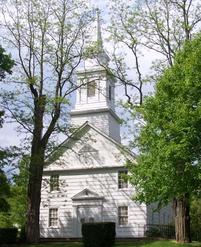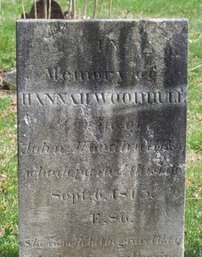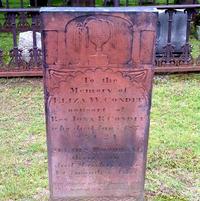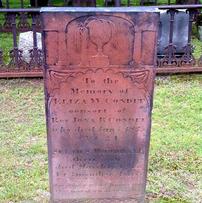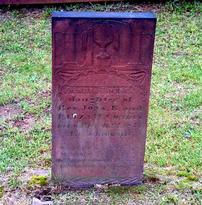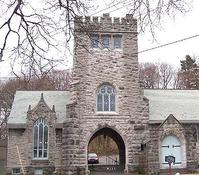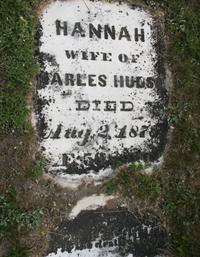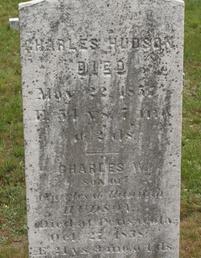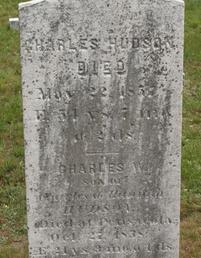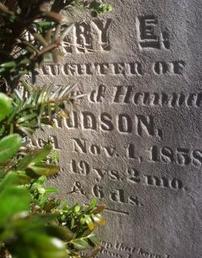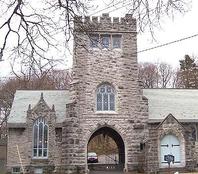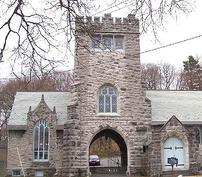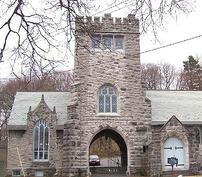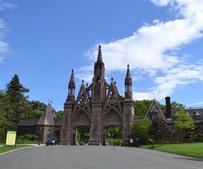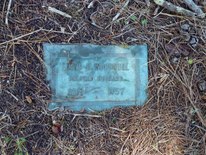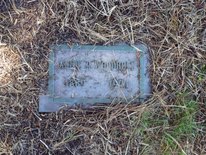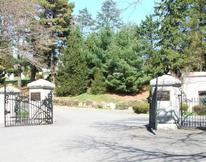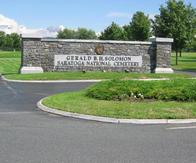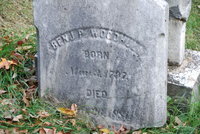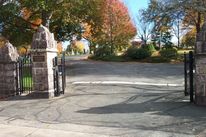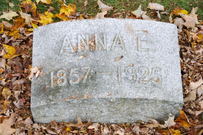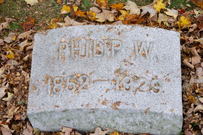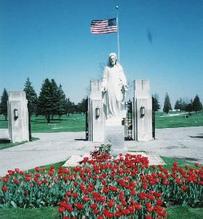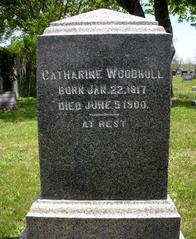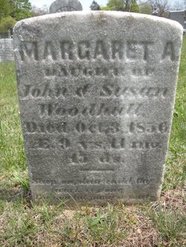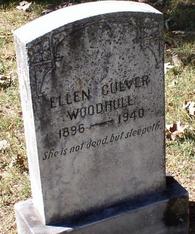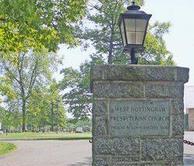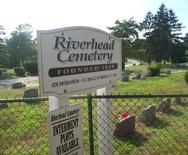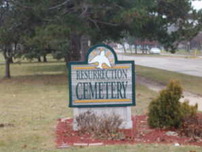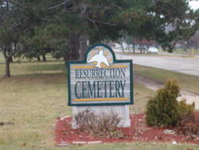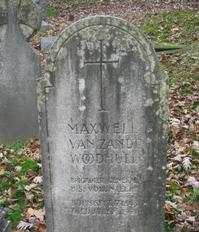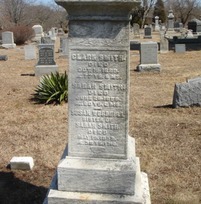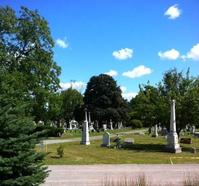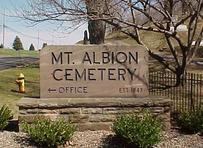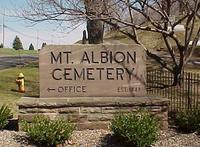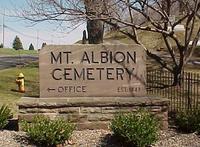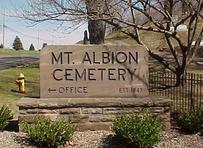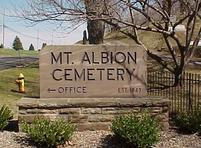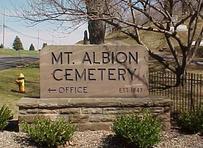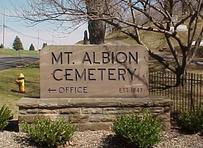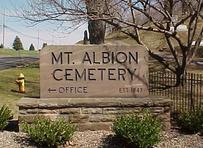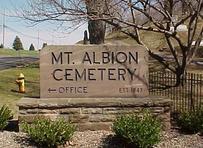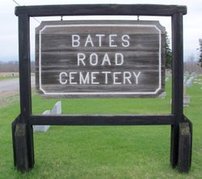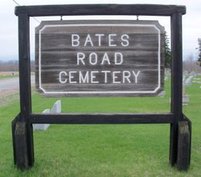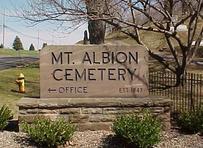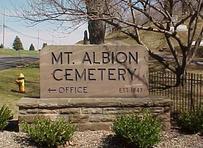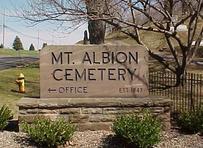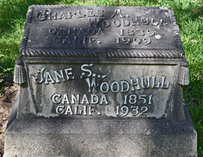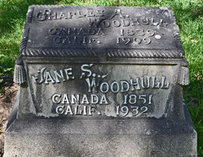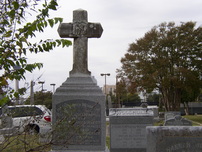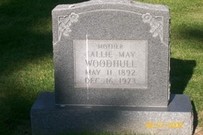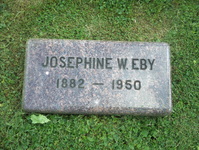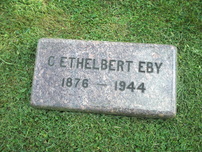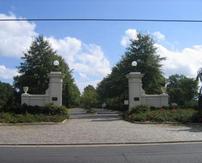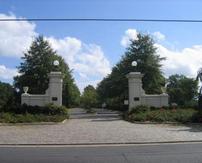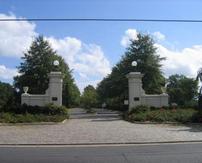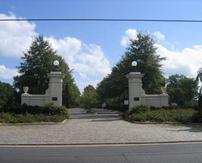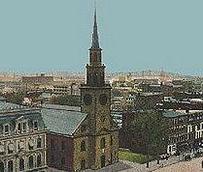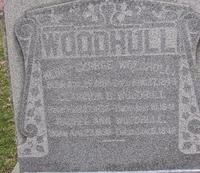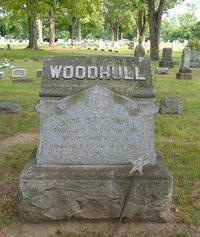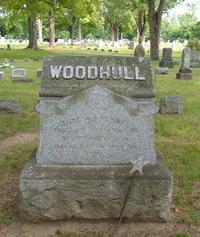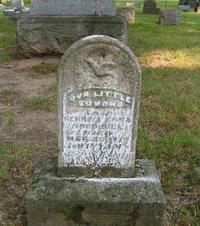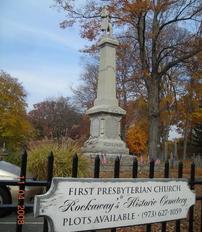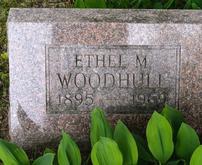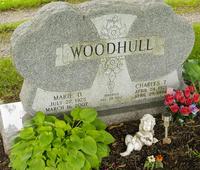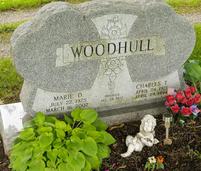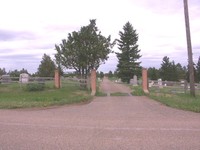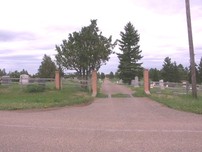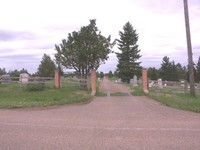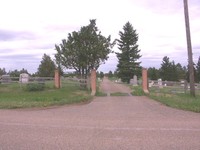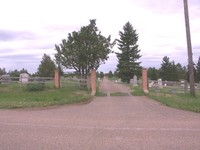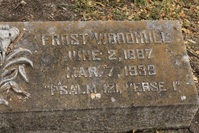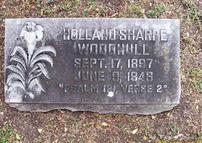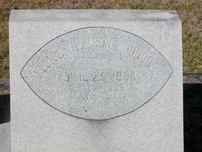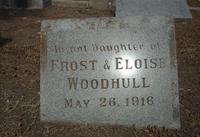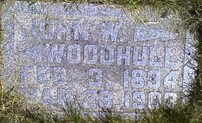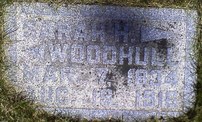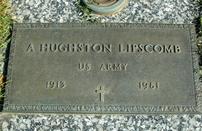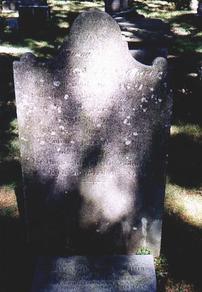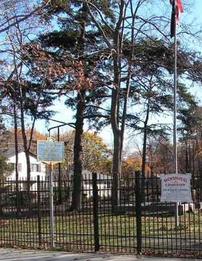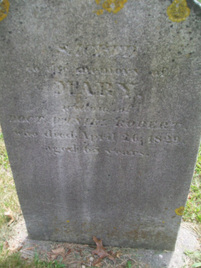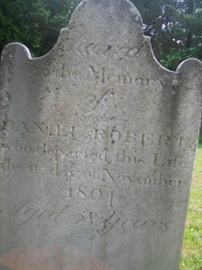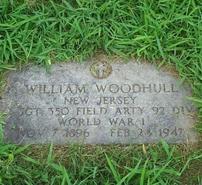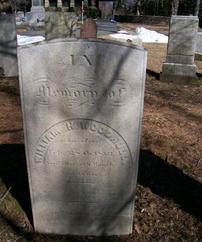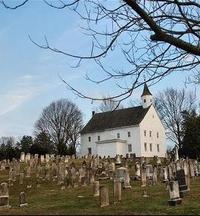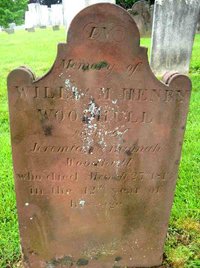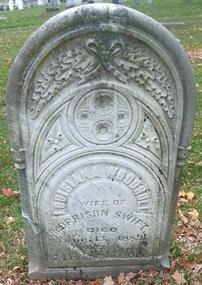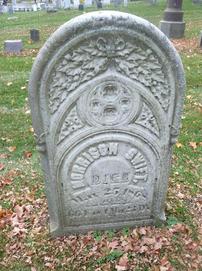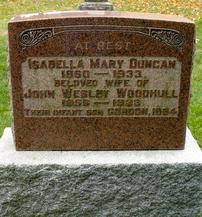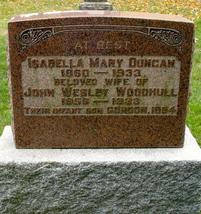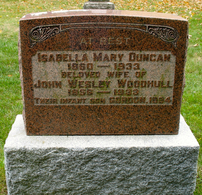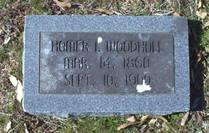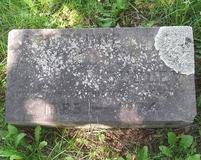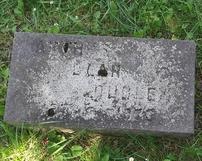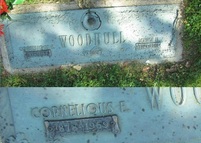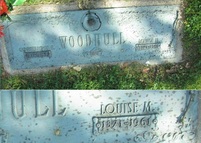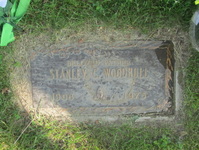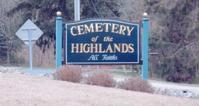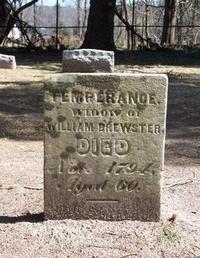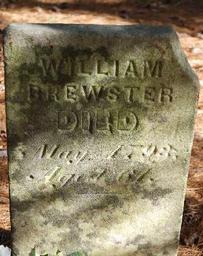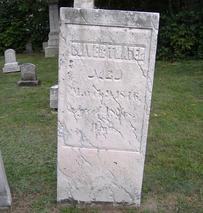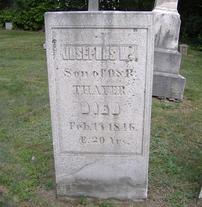Tombstones If anyone can contribute actual photos of Woodhull tombstones, have many without, we would greatly appreciate them.
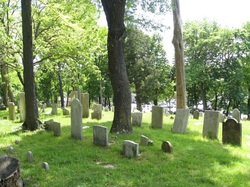
149. OLD BURYING HILL CEMETERY was desecrated during the Revolutionary War - HUNTINGTON, NY
Cemetery notes and/or description:
Listed on the National Register of Historic Places, Huntington's Old Burying Ground was the second public burial place in town (the first one, used from 1650s-1720s was located near the Presbyterian Church in what's now Hecksher Park. The earliest dated marker at Burying Ground Hill is from 1712. Early graves were marked by simple fieldstones or wooden markers. This site was chosen for use as a graveyard because it would not have been productive farmland.
During the last winter of the American Revolution, British troops, who had occupied Hunt-ington since September 1776, erected a fort on the top of the burying ground from timbers re-moved from the Town's Presbyterian Church. Construction of the fort, known as Fort Golgotha, greatly enraged local residents and is the first recorded act of vandalism. At least one hundred tombstones were destroyed and others were used to build bake ovens. According to local legend, bread baked in these ovens bore the reverse inscriptions of the tombstones on the lower crust. Forty-two veterans of the Revolution are buried here. The graveyard contains some 1246 marked graves, although it is estimated that three to four times as many people are buried here. The yard includes tombstones carved from local fieldstones, sandstone, slate, marble and granite, as well as a zinc marker and three iron markers. The markers bear a wide variety of early decorative patterns, such as a winged death's head and the soul effigy, as well as representations of inscriptive styling typical to other historical periods. In addition to the historical and genealogical information contained on the markers, they are some of the earliest folk art to be found on the Island.
Located on the rise known as "town hill," the Old Burying Ground has been a prominent local landmark throughout Huntington's history. The Old Burying Ground was used as a cemetery from the town's founding in 1653 until the mid-twentieth century. The four-acre cemetery contains a distinctive collection of eighteenth and nineteenth century sandstone and slate gravestones which exhibit a variety of historic decorative patterns, inscriptions and motifs. From the events that transpired in the cemetery at the end of the American Revolution, it is apparent that the cemetery occupied an important place within the community at the time.
In November of 1782, the British constructed a fort, known as Fort Golgotha, in the middle of the Old Burying Ground. During their one-year occupation of the fort, the British did considerable damage to the cemetery using some of the tombstones for tables and ovens and destroying others. Today the archeological site of Fort Golgotha is largely indistinguishable from the cemetery itself. The cemetery and fort site were listed on the National Register in 1981.
Cemetery notes and/or description:
Listed on the National Register of Historic Places, Huntington's Old Burying Ground was the second public burial place in town (the first one, used from 1650s-1720s was located near the Presbyterian Church in what's now Hecksher Park. The earliest dated marker at Burying Ground Hill is from 1712. Early graves were marked by simple fieldstones or wooden markers. This site was chosen for use as a graveyard because it would not have been productive farmland.
During the last winter of the American Revolution, British troops, who had occupied Hunt-ington since September 1776, erected a fort on the top of the burying ground from timbers re-moved from the Town's Presbyterian Church. Construction of the fort, known as Fort Golgotha, greatly enraged local residents and is the first recorded act of vandalism. At least one hundred tombstones were destroyed and others were used to build bake ovens. According to local legend, bread baked in these ovens bore the reverse inscriptions of the tombstones on the lower crust. Forty-two veterans of the Revolution are buried here. The graveyard contains some 1246 marked graves, although it is estimated that three to four times as many people are buried here. The yard includes tombstones carved from local fieldstones, sandstone, slate, marble and granite, as well as a zinc marker and three iron markers. The markers bear a wide variety of early decorative patterns, such as a winged death's head and the soul effigy, as well as representations of inscriptive styling typical to other historical periods. In addition to the historical and genealogical information contained on the markers, they are some of the earliest folk art to be found on the Island.
Located on the rise known as "town hill," the Old Burying Ground has been a prominent local landmark throughout Huntington's history. The Old Burying Ground was used as a cemetery from the town's founding in 1653 until the mid-twentieth century. The four-acre cemetery contains a distinctive collection of eighteenth and nineteenth century sandstone and slate gravestones which exhibit a variety of historic decorative patterns, inscriptions and motifs. From the events that transpired in the cemetery at the end of the American Revolution, it is apparent that the cemetery occupied an important place within the community at the time.
In November of 1782, the British constructed a fort, known as Fort Golgotha, in the middle of the Old Burying Ground. During their one-year occupation of the fort, the British did considerable damage to the cemetery using some of the tombstones for tables and ovens and destroying others. Today the archeological site of Fort Golgotha is largely indistinguishable from the cemetery itself. The cemetery and fort site were listed on the National Register in 1981.

